An ancient swamp full of fossils from extinct animals was discovered in Mauritius. 2,000-year-old swamp brimming with bones reveals the ecosystem of the dodo at.

It was first found by scientists in 1832, when it was said to be so full of animal bones that you only had to dip your hands into the water to retrieve them.
The site near Mare la Chaux has now been re-examined by an international group of researchers, including Museum palaeontologist Dr Julian Hume. It was excavated for the first time in a collaboration between the National Heritage Foundation and the landowner.
The area has already yielded many bones belonging to extinct Mauritian animals. Incredibly, the team found a huge diversity of species represented in the fossil record. They also found bones at a density of around 600 per cubic metre, much higher than other known fossil sites on Mauritius.
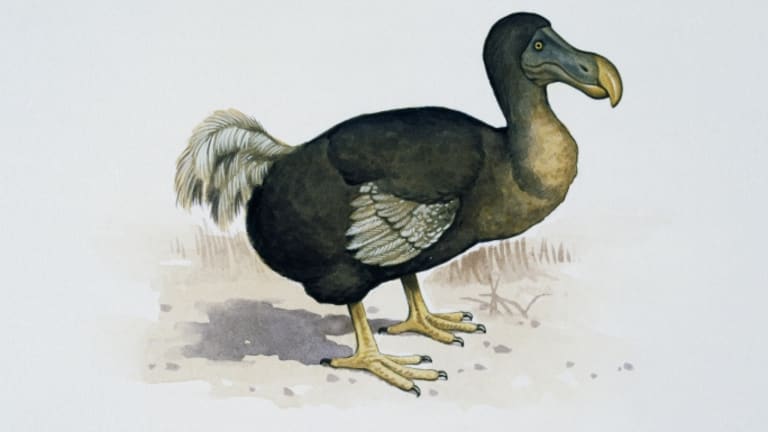
Dodo Bird reconstruction
Dr Hume, a specialist on the history of the dodo, says, 'This is one of the most exciting fossil excavations I have worked on. We are literally peeling back the history of Mauritius layer by layer.
'The sheer volume of remains we have found has been incredible, including extinct giant tortoises, giant skinks and dodos - a culturally significant bird to Mauritius and global icon of extinction.'
The team working on an excavation pit
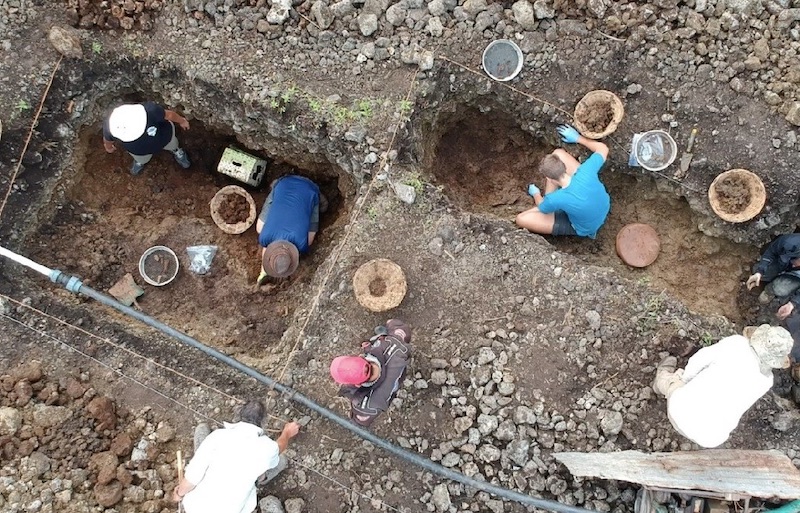
© Julia Heinen
Learning from the past
All these bones have allowed palaeontologists to date the site at 12,000 years old. That makes it one of the oldest fossil sites in the Western Indian Ocean. It is also the first inland, lowland fossil site in north Mauritius.
Until now, scientists knew little about the natural dynamics of the lowland rainforests of Mauritius. The discovery of fossil plant seeds and pollen will allow the team to reconstruct what the island looked like before humans arrived there, in the early seventeenth century. It will also help them to understand the impact of climate change during the last 12,000 years.
Dr Hume continues, 'The fossil site contains an ancient snapshot of Mauritius that has never been observed by humans, a dense canopy forest surrounding a lake that was an important resource for the native animals, especially dodos and giant tortoises.
Dr Julian Hume's reconstruction of what Mauritius could have looked like in the time of the dodo
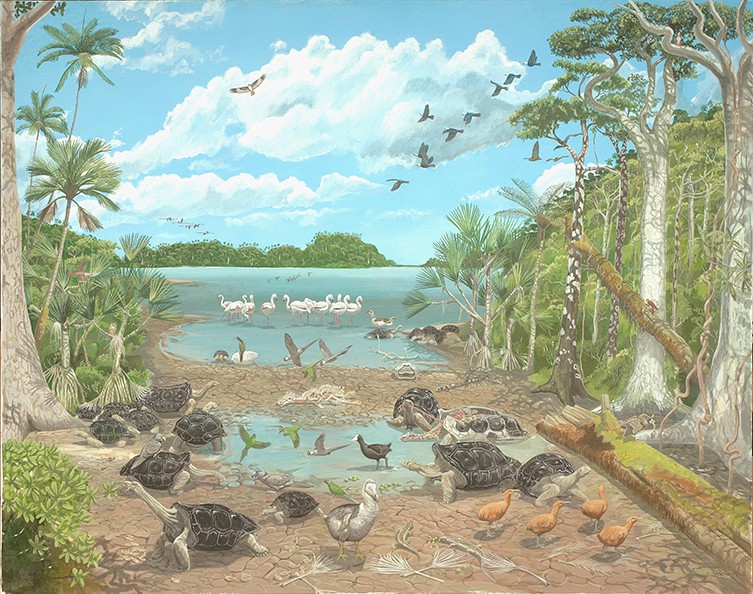
© Julian Hume
'The amount we have and can learn from this one site is unprecedented. Over the coming years I am sure many scientific discoveries will emerge from the soil here, helping us to better understand the ecology of Mauritius' past and so better help us protect its future.'
It is particularly exciting for scientists studying dodos, as the life history of this extinct bird continues to elude us. More is known about the dinosaurs - their population structure, nesting behaviour, eggs and young - than of a bird that disappeared relatively recently due to human interference.
The excavation team at the site
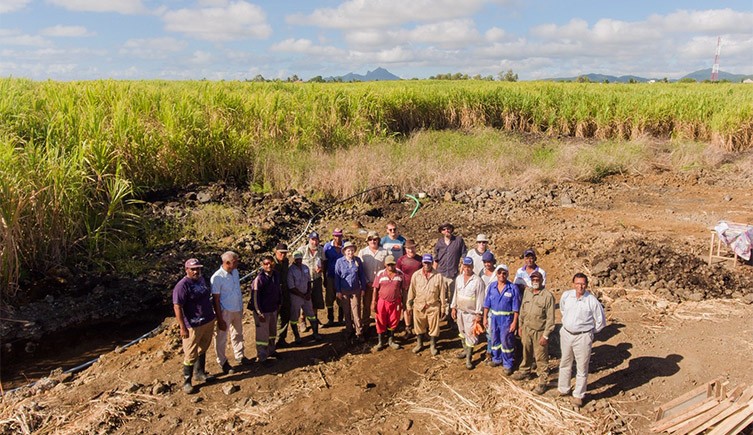
© Julia Heinen
The dodo lived solely in Mauritius and we know it was extinct by around 1680, less than 100 years after humans inhabited its island home. But we don't know exactly how it got there in the first place, how it evolved, how big it grew or how it behaved.
Dr Delphine Angst, a paleontologist specialising in fossil birds from the University of Bristol, adds, 'This is very exciting because for the first time we have dodo bones that are well-dated and associated through time with other animals and plants.'
The team plan to excavate the site for many years to come. They hope to provide information that will help assess the impact of climate change and cyclone activity on the island nation and determine how humans should treat the environment in the future.







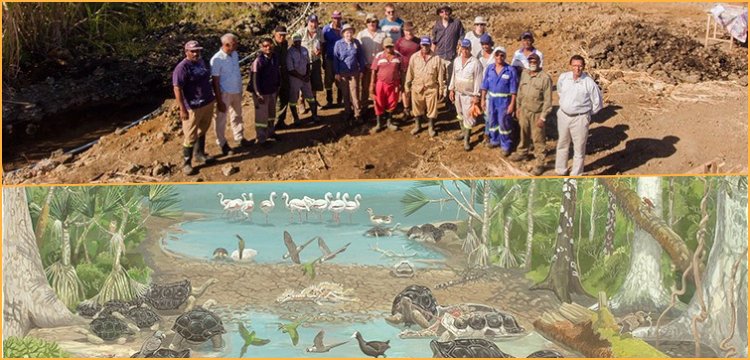
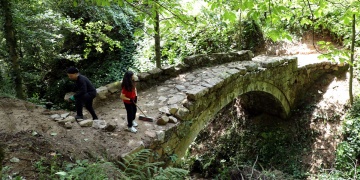 Ressam Serdar Abay, tarihi kemer köprüdeki yabani otları kızıyla temizledi
Ressam Serdar Abay, tarihi kemer köprüdeki yabani otları kızıyla temizledi  Archaeologists have discoveried a crusader altar in the Church of the Holy Sepulchre
Archaeologists have discoveried a crusader altar in the Church of the Holy Sepulchre 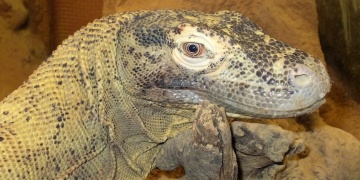 Komodo ejderinin demir dişli olduğu anlaşıldı
Komodo ejderinin demir dişli olduğu anlaşıldı 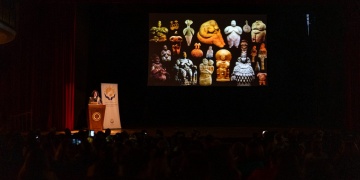 Doğa Taşlardan, Anadolu Tanrıçaları'ndan sonra Anadolu Bacılarının öykülerini anlatacak
Doğa Taşlardan, Anadolu Tanrıçaları'ndan sonra Anadolu Bacılarının öykülerini anlatacak 




